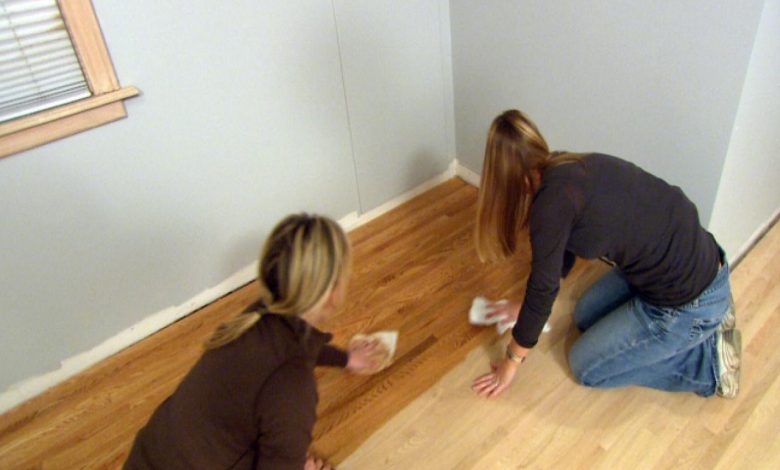Stain or paint wood floor – Explained

Treatment of wooden floor is vital to preserving the quality, finish and durability. We can change, transform and decorate the wood flooring by staining or painting it. But the dilemma is- paint or stain the wood floor – and the difference it makes.
Differentiating the wood stain from wood paint floor
The most significant difference between the wood stain and paint is the impression it creates on the appearance of the floor.
Staining the wood floor
The stain will help in preserving the colour of the floor much better and helps with being more resistant to damage and last longer. And this makes staining the most popular choice.
It is best to have the expert involved to stain the wood floor, as getting the right colour is not an easy task. Many factors affect the perfect staining of the wood floor such as the type of wood and finishing.
Oils and oil-based finishes tend to turn yellow as time passes. And more often, the grey coloured floor slowly change its colour as it ages. Water-based lacquers are more transparent and do not affect the stain. Stained floors also tend to highlight the imperfections in the grain as well. Make sure to remove the existing finish by thorough sanding before the staining the floor again.
Clean the floor and wet mop the floor to raise any grains, as it helps in better soaking of the stain. Use the brush and roller to stain the floor. Remove the excess stains to avoid uneven spreading. The time given for the stain to set determines the darker shade of the flooring. Staining is not a difficult process to do, but getting it right is quite a difficult one.
Painting the wood floor
The painting covers the existing finish and blocks the materials on the wooden floor. Painting gives a complete and profound change. Moreover, it is easier to remove the colour when you are unhappy with the result. The worry with the paint is its durability as the paint tends to chips and cracks, and makes it fairly visible. The fragility of the painted floor making it easily noticeable to opt floor paint.
A proper painting technique will help increase its durability and gives an improved and instantly transformed appearance. Start the process of sanding with fine, high grit sandpaper. Sanding makes the surface smoother. Vacuum the floor and wipe with a very small amount of water to make the wood floor cleaner. The complete drying of water is vital; if not the moisture content will more likely ruin the painting.
It is best to use the oil-based penetrating primer on the floor. It acts as an adhesive to hold the paint for much longer. Wooden fibres tend to swell up after the primer is applied, which affects the finish of the painting. Re-sanding is the trick. Clean the floor after the re-sanding and let it dry completely again.
Use the bristle brush and a microfiber roller to paint the wood floor. Make sure to keep the paint coating thinner and no bubbles are left are the procedure is finished. Clean and smooth surface is the indication that there aren’t any bubbles. It is best advised to apply a minimum of three coats with a drying time of 24 hours between each application to have the best finish of the wood floor.
Water-based polyurethane lacquer can be used for finishing as it provides the best protection to the wood floor and increases its durability. But again, giving it sufficient time to dry is the trick to make it work for you.

